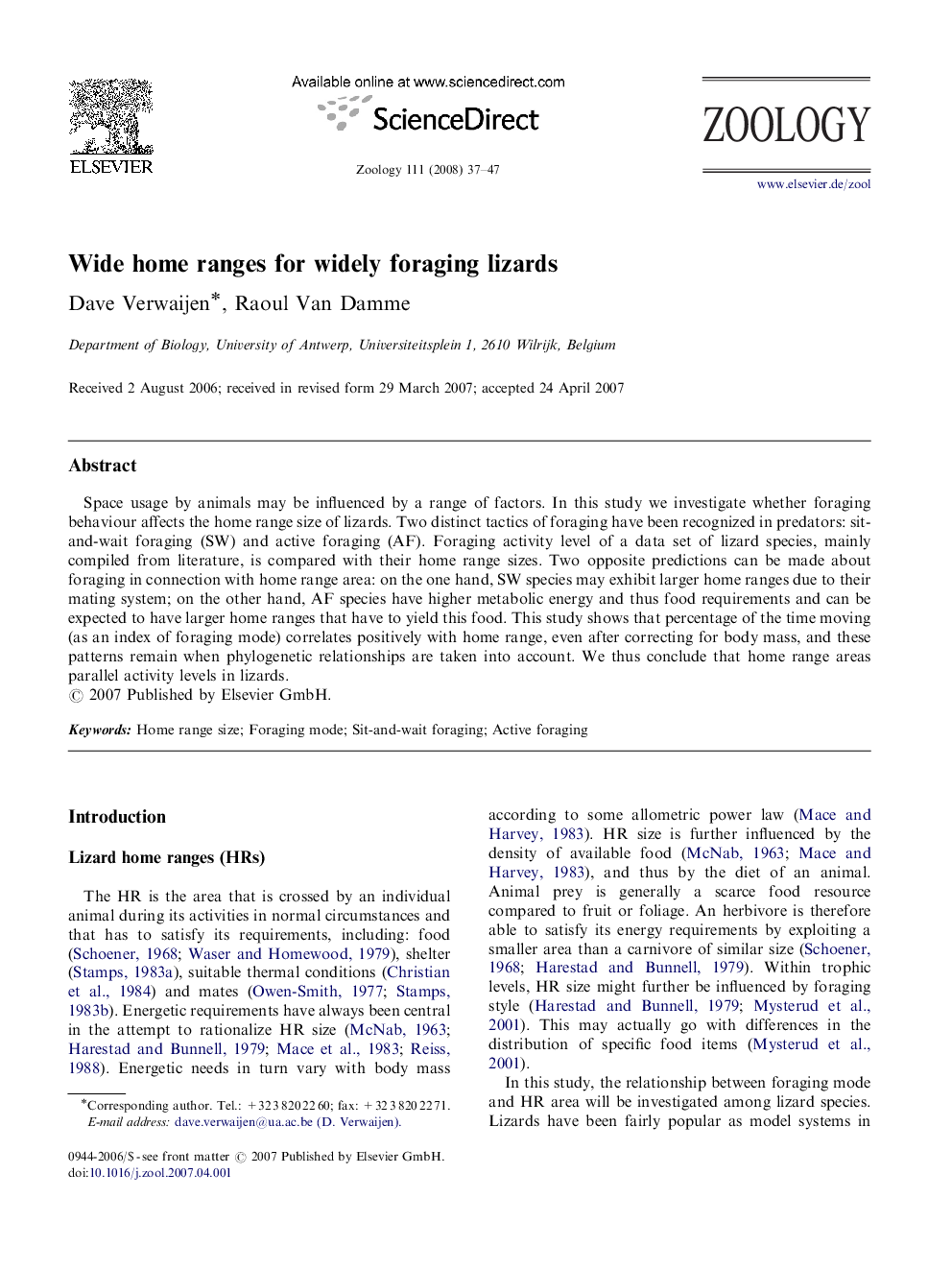| Article ID | Journal | Published Year | Pages | File Type |
|---|---|---|---|---|
| 2791190 | Zoology | 2008 | 11 Pages |
Space usage by animals may be influenced by a range of factors. In this study we investigate whether foraging behaviour affects the home range size of lizards. Two distinct tactics of foraging have been recognized in predators: sit-and-wait foraging (SW) and active foraging (AF). Foraging activity level of a data set of lizard species, mainly compiled from literature, is compared with their home range sizes. Two opposite predictions can be made about foraging in connection with home range area: on the one hand, SW species may exhibit larger home ranges due to their mating system; on the other hand, AF species have higher metabolic energy and thus food requirements and can be expected to have larger home ranges that have to yield this food. This study shows that percentage of the time moving (as an index of foraging mode) correlates positively with home range, even after correcting for body mass, and these patterns remain when phylogenetic relationships are taken into account. We thus conclude that home range areas parallel activity levels in lizards.
